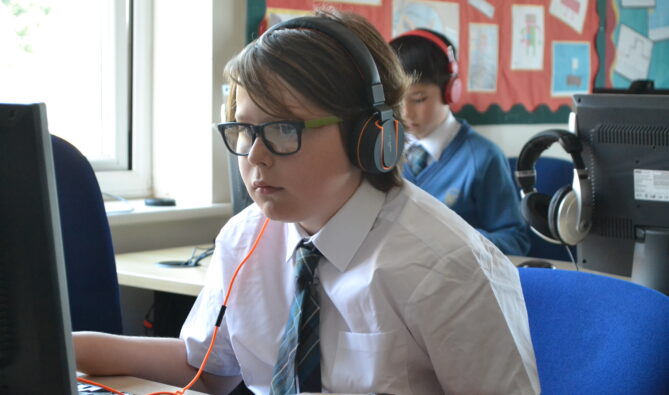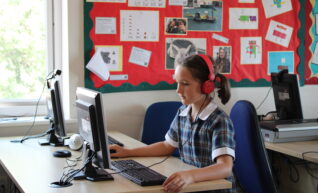We recognise the need for pupils to develop the skills required in everyday life and to become confident and active participants in a digital world. Computing is taught as a discrete subject by a specialist teacher to ensure skill coverage, but cross-curricular links are made where possible.
The ICT suite has 20 computers and is used by each year group for a weekly Computing lesson of 1 hour from Years 2 to 6. Reception and Year 1 alternate Computing with Swimming.
In Key Stage 1, children are encouraged to develop an appreciation of the use of Computing in the context of the wider world. They will use games and paint programs to improve their mouse control. They learn basic word processing and keyboard skills and begin to create graphs and pictograms, using age-appropriate software. They will take photos using iPads and digital cameras and make simple videos. Computer Science is now at the core of the new computing curriculum and children will create simple programs using coding websites, apps and programmable robots.
In Key Stage 2, children develop their skills as both users and creators of information technology, participating in a wide variety of activities to gain competence in word processing, spreadsheets and multimedia presentations using the Microsoft suite of programs> The curriculum allows children the opportunity to experience stop-motion animation, green screen videos, art and 3D graphics programs as well as collaborating to publish work to a website. Older children will use drag and drop programming environments to code their own games and control physical equipment as well as program objects in on-screen simulations, analysing and debugging their programs.
Online Safety
The school web filtering service guards against accidental access to materials which are inappropriate. eSafety lessons are a key part of the curriculum, particularly as children progress through Key Stage 2. They receive guidance for its safe use and appropriate online behaviour. We can only be successful in keeping children safe online if we work with parents to ensure the eSafety message is consistent and we ask parents to have regular discussions with children when using the internet and social media at home.






